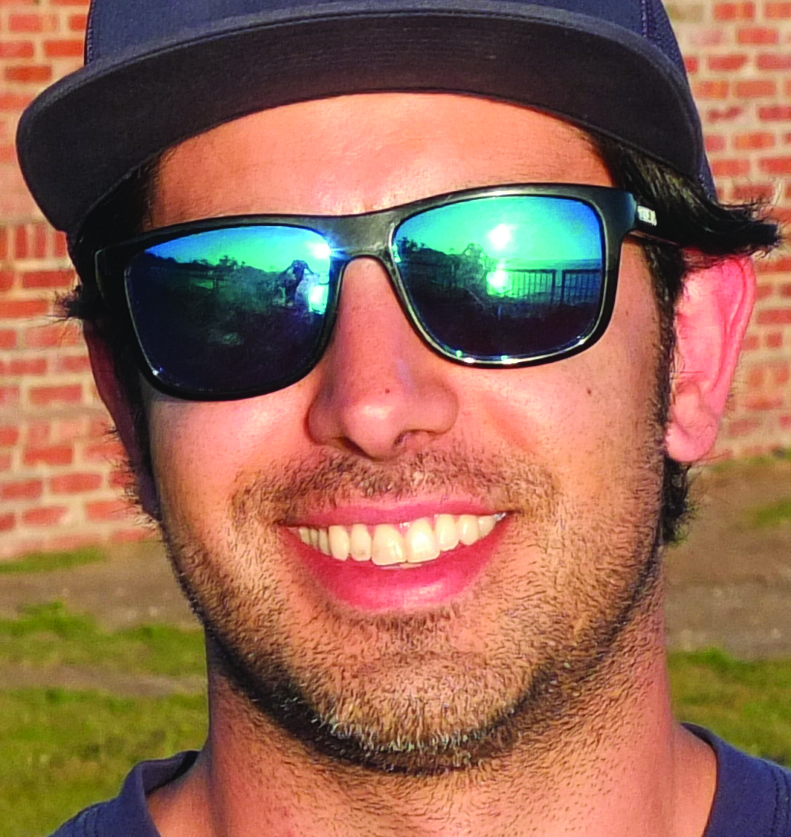
“The highest I’ve ever been was at the top of the Giant Dipper on April 20th.”

“The highest I’ve ever been was at the top of the Giant Dipper on April 20th.”
We are lucky to live in an area where Pinot Noir thrives. This sensitive grape grows well in the Santa Cruz Mountains, thanks to a perfect climate of heat during the day and a cooling marine layer at night. It’s also thanks to talented winemaker Brandon Armitage that we can enjoy an impressive Pinot from Mt. Roberta Vineyard in these very mountains—his 2013 Pinot Noir Reserve ($55).
Armitage, who spent some years in New Zealand honing his skills in the winemaking business, strives to make only the very best wines, hand-selecting each barrel “to blend the best of what the vintage has to offer.” The end result is a robust Pinot but with an intriguing delicacy. Rich in red fruits like strawberries and cherries, it also boasts warm layers of characteristic earthiness, with touches of smoke, spice and vanilla enhancing the wine’s bountiful flavor. An intricate label of geometric patterns in various shades of blue and green, designed by Aspen Moon Art, adds to this Pinot’s enigma.
“Sacred geometry is used throughout my winemaking business,” explains Armitage of the label. “Its energy is harnessed in different ways to help build and preserve a sacred space for connection with the winemaking process, from soil to bottle. The seed of life is used in my logo, on my label, cork, and barrels. This symbol, to me, represents creation and healing,” he says. “As winemakers we are taking from the grapevine her fruit and breaking it down, turning it into something else.”
Armitage Tasting Room, 105c Post Office Drive, Aptos, 708-2874. Armitagewines.com. Open 2-7 p.m. Thursday and Friday; noon to 7 p.m. Saturday; noon to 6 p.m. Sunday.
Armitage Wines will be participating in a fundraiser for Nicole Brown, a designer with Talmadge Construction who worked with Armitage on his tasting room. Brown was paralyzed in a hit-and-run accident in June 2015 and is now in a wheelchair. Brown herself will be hosting a “Street Fair” where small businesses can reserve a table to display and sell their wares. Fifty percent of sales will be donated to Brown. Armitage Wines, along with Cantine Winepub, will be donating a percentage of their proceeds, and guests will be able to shop while sipping on delicious wine and checking out a silent auction and bake sale. The event is noon to 4 p.m. on Saturday, April 23 in the parking lot at 8070 Soquel Drive, Aptos. Info: ni*******@ya***.com“>ni*******@ya***.com or Adele Talmadge at ta******@gm***.com.
Fifteen minutes into a hike led by licensed acupuncturist Glenn Kazmierski, our group has already made its second stop, a break to chew on some yarrow leaves, a shrub that sprouted to life surprisingly early this year near a bridge at Wilder Ranch State Park. Its minty, bitter taste lingers in our mouths as Kazmierski explains, with a grin, that he plans to take us into an open field for exercise. Along the way, we’ll snack on plants like miner’s lettuce and sour grass. We’ll drink two kinds of hot tea, including a brew made from a stinging nettle plant that we’ll harvest ourselves.
“I want to make friends with the plants, so that we can say, ‘Hello, yarrow. Hello, nettle!’” Kazmierski says, waving his arms, one by one, in a circular motion. “‘I know you. Do you know me?’”
Soon, we come to a running creek. As we take off our shoes to cross, Kazmierski pauses to shine a light on this moment as an opportunity to let go of all worries.
“This is what I call an experiential gateway crossing from the everyday world to the more-than-human world, where we can be more in touch with reality,” he says, standing beside the stream. “It’s a message to my psyche that I’ve left the world of normal cares and reestablished a connection with the world in a way that restores my sense of well-being.”
In traditional Chinese medicine, which Kazmierski practices, the spring is a season that activates the qi, or energy, in the liver. If that liver energy stagnates, it can create other health problems all over the body. A brisk walk with swinging arms can stimulate healthy lungs, which support a better liver. Sour or green foods like the ones he has us enjoying are supposed to cleanse the blood and clear the liver.
“Nature’s pharmacy is amazing, and all we need to know is a few plants, and we can get along in a way we couldn’t before,” says Kazmierski, who—in the interest of full disclosure—happens to be my acupuncturist.
Kazmierski used to enjoy checking in with nature for days at a time, going on little retreats by himself. But after starting his private practice, he began finding it harder to get away. He began going on shorter trips, just a few hours at a time. At that point, he figured it was time to start bringing other people in, so they could connect with the natural world, too, and learn a new sense of how to live a healthy existence.
“Without this kind of sense, we just keep doing the same things over and over again. It’s my opinion that it’s really important to disconnect,” Kazmierski says. “And where are you going to disconnect to—the TV? Why not disconnect and reconnect to something that’s alive and real and brings aliveness back to one’s being? I want to generate a sense of empowerment through self-cultivation in nature as a way of restoring one’s health and sanity. And also, by connecting to nature, we’ll have more of a sensitivity to life and other people.”
Kazmierski wants to start leading nature walks like this each season, four times a year, including tea hikes like this one in the spring and fall, each for about $70 per person. A portion will be donated to a local outdoor program educating youth. He has a vision of people all over the county getting outside and experiencing nature together.
On a grassy hill overlooking the ocean, Kazmierski leads us all in some qi gong and stretches to activate the lung channel and further heal the liver.
“We may feel silly moving our limbs out in the open, but we’ll all be doing it,” Kazmierski says, as he warms up, his limbs flailing around. “And also, it’s OK to be weird!”
For more information on Kazmierski, visit glennkazmierskilac.com or call 459-6005.
Helping someone who’s come back from fighting overseas can be a life-changing experience. In that spirit, for the fifth year in a row, Operation Surf Santa Cruz is bringing wounded vets and active duty servicemembers to Santa Cruz for six days of healing fun in the ocean. Sponsored by the nonprofit Amazing Surf Adventures (ASA), the group’s mission is to help current and past soldiers overcome challenges through surfing and ocean education, and they’ll be in Santa Cruz April 12 through 18.
“We talk to guys who have seen their friends blown up and die in their arms,” says Robert Oliveros with a somber tone, adding that veterans and active duty soldiers “have made huge sacrifices, so it’s just a way of giving back.”
There are many ways of “giving back,” but the one Oliveros has chosen to volunteer for comes with more sun than most, and some awesome waves. And those involved with Operation Surf Santa Cruz say they can see its impact immediately.
“The difference between when they arrive and when they leave is night and day,” says Brent Edwards, who has spent the last year and a half as a board member for ASA, and has participated in Operation Surf since it arrived in Santa Cruz. Edwards served as a Marine for six years himself, even doing one tour of the Middle East during the Gulf War. “They find parts of themselves they didn’t think existed anymore. It’s really amazing,” he says.
Instructors paddle alongside the new surfers—some who have Post-Traumatic Stress Disorder (PTSD) or are missing limbs—helping them to pick up speed on the wave and then steadying them as they stand.
“Operation Surf helped me realize that I was limited in my capabilities,” one injured vet says in a promotional video. “Surfing definitely changed my perception of my injuries. I realized that my injuries aren’t going to hold me down anymore, and I can do just as much as I did before I got hurt.”
Rodney Roller, a professional surfer and amputee, founded the effort in 2010. Van Curaza later took the reigns, launching the program in San Luis Obispo, where he and his wife Amanda currently run a surfing school, and brought it to Santa Cruz in 2011. The idea is to pair each soldier or vet with an individual surfing instructor for a one-to-one experience.
“The crux of the program is really the bond that is created between the participant and the instructor,” Edwards says. “They stick together all week, and many of those bonds last years. We become an extended family for them to rely on.”
To date, the program has helped more than 500 veterans through the calming power of shredding the ocean.
Many of the vets and active-duty members have never surfed prior to the event; some even come from landlocked states and have never even seen the coast. The most inspiring part, Edwards says, is seeing many of the participants hitting the waves with missing limbs from their time in duty. “We always like to say we help out people with physical wounds and unseen wounds,” says Edwards.
This year, 18 new participants will arrive in San Jose, where they will be taken to Santa Cruz in a motorcade, escorted by a fanfare of police, firemen and civilians. Participants spend the first day taking in their surroundings, meeting volunteers, bonding with one another and learning about ocean safety.
The opening ceremony takes place at the Santa Cruz Wharf entrance at 9 a.m. on April 13 with a full military color guard and a few speeches from the organizers. After that, the vets and soldiers surf for the next five days, spending a few days at Cowell Beach and then moving to Capitola over the weekend. Each night, the surfers are taken out to dinner where they can talk about the day’s events and relax with each other and their instructors.
Organizers spend almost the entire year planning for this event, enlisting over 50 volunteers to help with water safety, surfing instructions and gathering help in the local community. Places like the Richard Schmidt Surf School, the Crow’s Nest, the Dream Inn and even CrossFit all have a hand in helping Operation Surf Santa Cruz run as smoothly as possible.
“In one event, we can have almost 400 volunteer positions,” says Amanda Curaza of Operation Surf. “So it takes a huge amount of effort and hours to make it happen.”
The general public is also welcome to show their support by participating in the opening ceremony and cheering on the surfers.
“We live in such a beautiful place, with the resources needed to surf, that it’s almost our responsibility to give back,” Oliveros says. “Plus it’s just a really fun event.”
Operation Surf has been such a success that ASA recently began a chapter in Cocoa Beach, Florida. This year, they were invited by British organization Help For Heroes to start the event in the United Kingdom in September.
“We’re really excited,” says Curaza. “Van has figured out what works well—and why—so we hope to repeat it, continue it, and keep it growing.”
Operation Surf Santa Cruz continues to need volunteers throughout the week and to prepare for its 2017 event. Visit facebook.com/operationsurf for more information.
A French-born gypsy jazz guitarist, Stephane Wrembel is a standout in the contemporary jazz scene, with his brilliant musicianship and lively, soulful style. Well-known among gypsy jazz enthusiasts, Wrembel is a veteran of the spotlight, including a performance at the 2012 Academy Awards and work on the scores for the Woody Allen films Midnight In Paris and Vicky Cristina Barcelona. A student of tradition, Wrembel also thrives on moving sounds and styles forward and is influenced by world music of all styles.
INFO: 7 p.m. Thursday, April 21. Kuumbwa Jazz, 320-2 Cedar St., Santa Cruz. $22/adv, $27/door. 427-2227. WANT TO GO? Go to santacruz.com/giveaways before 11 a.m. on Friday, April 8 to find out how you could win a pair of tickets to the show.
Steve Palazzo has been involved with music his entire life. A couple of decades ago he was making instruments. And since the early ’90s, he’s been a full-time guitar teacher. However, a lot of folks might know Palazzo for the bluegrass band Homefire, which was together for a quarter-century before calling it quits just a few years ago.
That hasn’t stopped Palazzo from playing music. Now he plays shows under his own name, drawing from similar roots music influences but with a more intimate feel.
“Part of it was I wanted to do some different stuff besides straight-ahead traditional bluegrass. I wanted to do smaller ensemble stuff,” Palazzo says. “It’s been fun working on these tunes with a smaller group. There’s certain things we couldn’t do with a bigger ensemble. We put a little more emphasis on the vocals.”
There’s also an album in the works, one that Palazzo has been working on for the better part of a year. Part of the reason it’s taken so long is that he’s been bringing in different local and touring musician friends to record on various tracks. He’s hoping to have his solo record out this spring, and believes Americana music lovers will truly appreciate it.
“I’m attracted to those roots styles. There’s traditional fiddle tunes, one track is a Johnny Cash tune, but we arranged it with fiddle and mandolin, and two guitars. It’s traditional stuff,” Palazzo says. “I’ve played this music long enough where my versions of these tunes are never exactly like anybody else’s at this point. There’s some straight-ahead bluegrass, but then there’s just some fingerpicking stuff.”
INFO: 7 p.m. Sunday, April 10. Don Quixote’s, 6275 Hwy. 9, Felton. $15. 335-2800
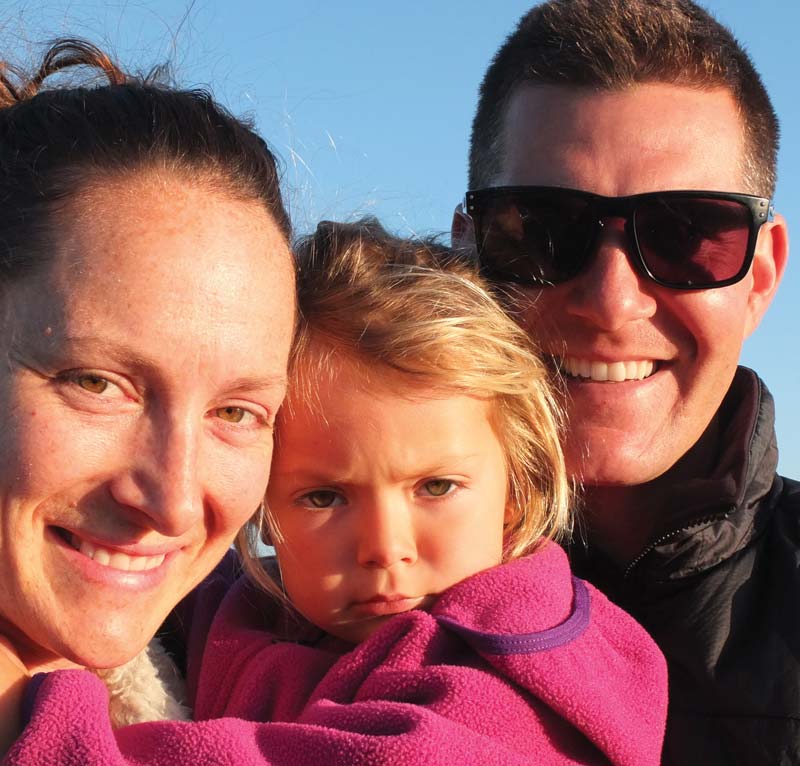
“Spending time with my family on days like this.”
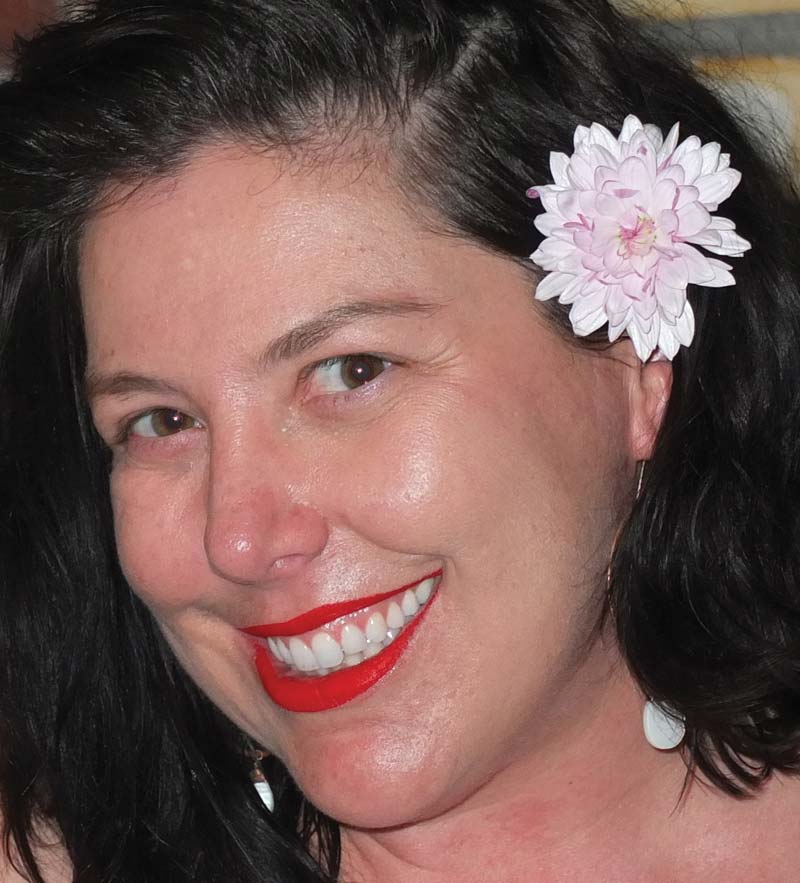
“Aside from climbing Mount Whitney, which is over 14,000 feet, the highest I’ve been was witnessing my first mother give birth to her baby.”
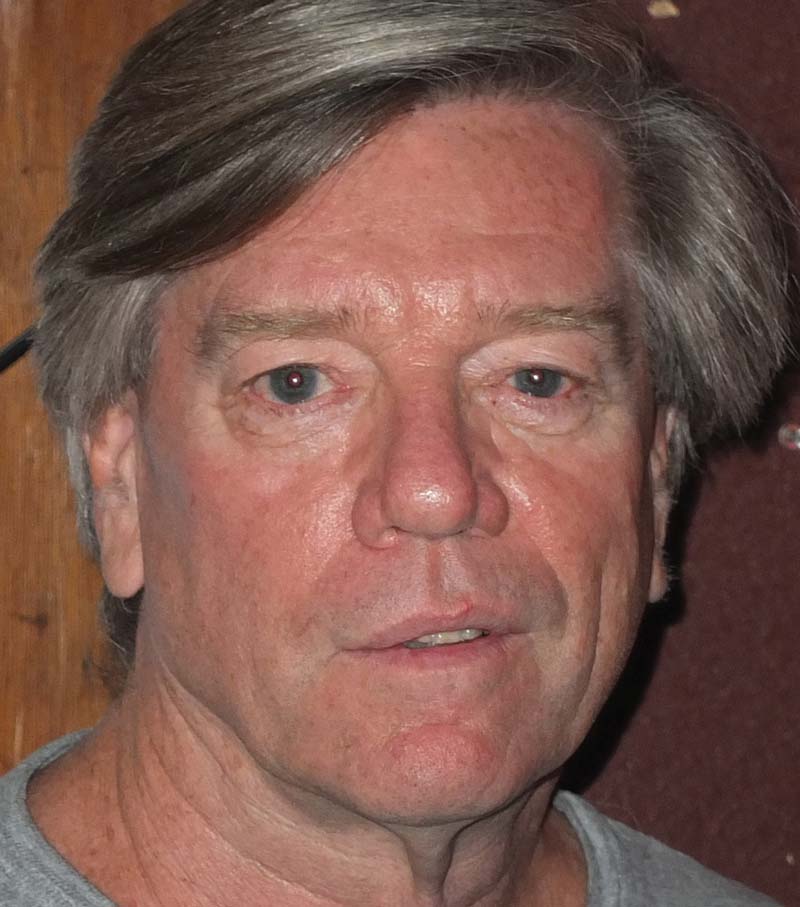
“I had a toothache, went to the dentist, put a Sony Walkman on my head and he gave me nitrous oxide. I was having a ball.”
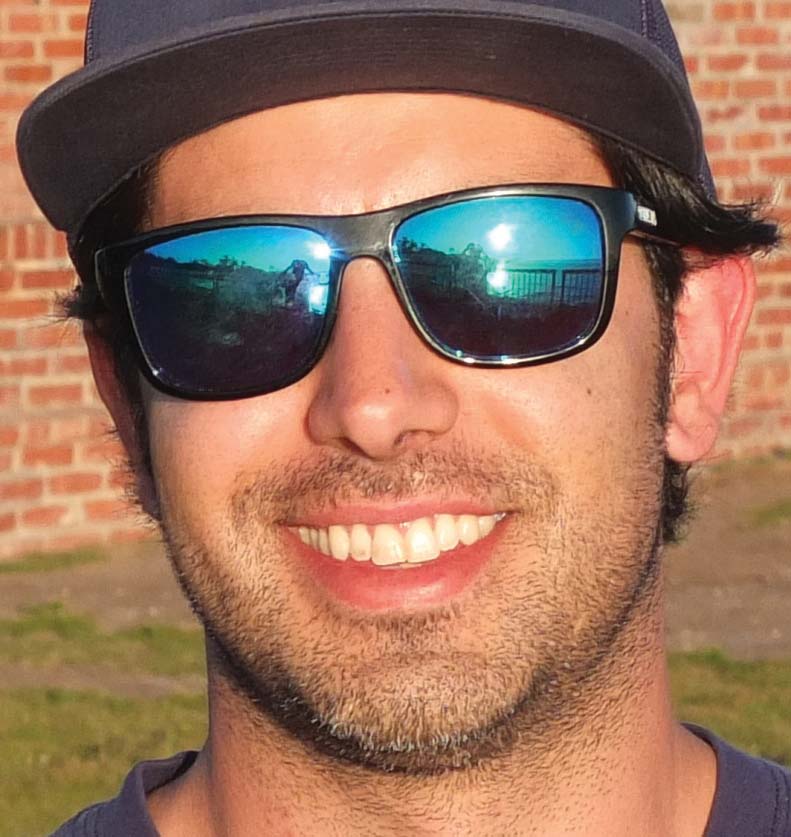
“The highest I’ve ever been was at the top of the Giant Dipper on April 20th.”
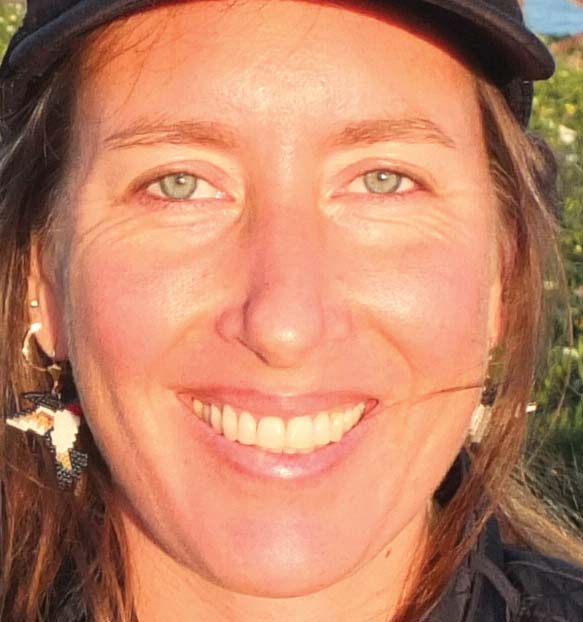
“Literally in a stargate above our planet going at the speed of light during a third eye meditation.”
It’s tough to get a movie biography right, to find a way to make the messy facts of someone’s life as compelling as fiction. Last year, Steve Jobs did it, condensing the material into three key moments in its subject’s career that charted his personal and professional evolution.
Then there’s I Saw The Light, the biographical drama about legendary country singer-songwriter Hank Williams. Writer-director Marc Abraham doggedly trots out the facts of Williams’ astonishingly short and productive life (36 hit songs before his death at age 29). But the material is presented without much insight, and the storytelling feels flat. It’s like watching somebody else’s home movies—interesting for awhile, but not personally involving.
Fortunately, the film stars the highly watchable Tom Hiddleston, the accomplished British thesp best known to movie audiences as Loki in the Thor franchise. He may not be the first person you’d think of to play Alabama-born proto-rockabilly crooner Williams, but Hiddleston has presence to burn, and he looks great in a cowboy hat. He even does his own singing. With a fresh, honest approach that doesn’t try to imitate Williams, Hiddleston sells the music with his laid-back demeanor and killer grin.
Early on, we see Hiddleston’s Hank perched on a stool in the spotlight, singing, his face shaded by the brim of his hat. It’s a great, iconic image, but it soon proves to be a metaphor for a movie that never quite gets beneath the surface to the man under the hat. Then, we cut to 1944, with Hank getting married to his sweetheart, Audrey (Elizabeth Olsen) by a justice of the peace at a gas station in rural Alabama.
Hank and his band sing in honky-tonk bars and appear weekly on a local radio program. He dreams of Nashville, and appearing on the Grand Ole Opry, but he’s shy about singing at auditions. He gets a music publishing deal as a songwriter, which leads eventually to his band making their first studio recording. At home, tensions mount between Audrey and Hank’s manager/mom, Lillie (Cherry Jones), while Audrey pressures Hank to let her perform with the band—even though her singing is so strident that the radio station engineers discreetly turn off her mic when they’re broadcasting live.
But Abraham never builds these scenes into a compelling narrative; it’s just a series of vignettes that all start to feel the same. Hank drinks way too much. He fights with Audrey, who says he’s squelching her dreams. He flirts with random women, many of whom end up in his bed. He takes pills on the road, and morphine injections for back pain, and makes promises to do better by his loved ones that he never keeps.
But despite the accumulation of these details we never really understand who Hank is, or what private demons drive him. Abraham never uncovers the person behind the image; he’s content to stick with the persona of the raw talent living the self-destructive honky-tonk life.
Meanwhile, connections between scenes are often vague. Hank is strumming his guitar on the porch when an unknown woman materializes on the step beside him; they lob some sexy banter back and forth until Audrey appears in the doorway and the mystery woman melts out of the scene—and the movie. Later, with no prelude, we suddenly see Hank shaking with the DTs in a hospital bed, trying to dry out.
Still, the music can jolt the movie to life. That Hiddleston does his own singing lends authenticity to these scenes, whether he’s onstage with the band, or strumming a bittersweet “Your Cheatin’ Heart” for his producer, accompanied only by his own guitar, or singing a lullaby to his infant son. Singing “Lovesick” for his debut at the Grand Ole Opry is a highlight early on, and a wry, saucy onstage version of “Why Don’t You Love Me Like You Used To Do” wakes things up with a bang. If only Abraham had been able to infuse the rest of the movie with that kind of energy.
I SAW THE LIGHT
**1/2 (out of four)
With Tom Hiddleston and Elizabeth Olsen. Written and directed by Marc Abraham. A Sony Classics release. Rated R. 123 minutes.
[take this out]Every now and then a photograph transports its subject into a compelling new space. Coastal cliffs overlooking beach and waves: A familiar subject. Yet everyone who sees Tim Matthews’ shot of Pomponio Beach is stopped in their tracks. The image is that powerful. It demands your attention. Such a photograph could easily make a career. But in Matthews’ case, the career was already well underway.
“It was low tide, my wife and I had stopped to walk on the beach after a visit to San Francisco,” Matthews recalls of the engaging image. The image is faintly perfumed with warm color. “I call it digital tone,” Matthews says with a grin. Shot with his Nikon D810, the image was run through his computer, then cropped and printed.
“They all start out in color,” he observes, as we both study the haunting seascape. “Then I desaturate it. I like black and white.” The slight blush of color warms up the heroic shelf of cliffs and sand. The haunting image is 14 x 21 inches, a size the tall photographer with a shock of boyish white hair tends to favor.
What makes it so memorable is that Matthews’ cliffs plunge diagonally across the picture plane, revealing both the sand at our feet as well as the cliff edge towering above and then out of the left top corner of the print. The diagonal implies everything about the setting. The cliff begins, and ends, far beyond our point of view. The shot begins, and ends, with a seasoned eye.
Born in Santa Cruz into a family deeply rooted in the Central Coast, Matthews grew up in Hollister and went to UCSC.
Seacliff pier, the Capitola skyline, all blurred, just out of reach, in characteristic pinhole fashion. They feel, and look, like memories.
“I used to tell people that I majored in sailing and minored in geophysics,” he says. Other directions called. Always a sailor, Mathews began work in the marine industry, at O’Neill’s and West Marine. “That’s when I really began doing photography,” he explains. “Doing catalog work for West Marine and for NHS skateboards. And I still have some long-standing clients, mostly for artist’s portfolio work and catalogs.”
Pursuing his own fine-art photography “off and on,” Matthews got serious about it in the mid-’80s, now showing his atmospheric black and white prints at six to eight shows each year. “And I’ve been doing Open Studios for the past four or five years,” he says. Then with a smile, “Sales are always nice.”
The barnlike structure Matthews shares with his wife’s etched glass business contains a bohemian warren of studios and offices. Elegantly framed prints line two walls, and a suite of softly blurred color prints are stacked along one corner. “I don’t do much color now,” Matthews admits, showing me each of the subtly colored images. “I fooled around with a pinhole camera for a while, and made these. I call the series “Childhood Memories.” Seacliff pier, the Capitola skyline, all blurred, just out of reach, in characteristic pinhole fashion. They feel, and look, like memories.
“With the 2008 recession,” he continues. “the commercial business slowed down. I started playing around with the scanner, digitizing old negatives and making digital prints out of them.” He was a bit surprised with the results. “I realized I should be doing my own work,” he says. Matthews’ work offers up the timeless beauty of nature. Waterfalls, rushing streams, foggy coastlines. “My actual vision has stayed consistent. Landscapes. The natural world has always been my influence and my interest,” he explains. “My family had a farm in Aptos. I have always had a connection to the natural world, an older world.”
Matthews held out for a while, resisting digital. “I was attached to film. And early digital technology was expensive,” he says. But that was then. “The last time I shot film was 2011,” he says.
Matthews contends that the rise of the iPhone and “all the stuff on Facebook and Instagram doesn’t bother him. “Everything’s changing,” he admits with a slow grin. “Everything’s become more visual.”
“I’m not trying to make a living with these,” he says, although he does admit that he sells a lot of his elegant matted and framed prints to people who want to decorate their second and third homes, and to coastal resorts. “I run the glass studio here, and do metalwork for the glass projects,” he says. He likes his neighbors, John Crawford and Richard Mayhew—both oil painters—who work in the buildings next door.
Matthews continues to explore his love for the natural world. “Nostalgia in advance,” he calls his prints. The rugged grandeur of his images from field trips to the Sierras, such as his Mono Creek series, were influenced by Paul Strand and Minor White. “I’m intrigued by the drama of the diagonal and by abstract composition,” he says. “I do enjoy the craft of it. It’s part of the process. There’s big difference between uploading something to the Internet and working with prints.”
The photographic prints of Tim Matthews invariably return to the irresistible natural magnets—the mountains, the water. “Yes it’s been done,” he agrees. “But everything’s been done.”
Tim Matthews’ prints are at R. Blitzer Gallery through April 4. timmatthewsphoto.com/about.html
Whatever you may think you know about the city of Los Angeles, you may find your assumptions challenged by City of Gold. No, it is not (as the title suggests) a movie about the lifestyles of the rich and famous. It’s a fascinating foodie doc about Jonathan Gold, esteemed food critic for the Los Angeles Times, whose insightful writing about the culinary scene in L.A. has earned him a Pulitzer Prize for Journalism.
Gold has not won this accolade by choosing the most exquisite verbiage to describe plates of decadent delights. He’s not that kind of food writer. What Gold does is hit the streets in his bottle-green pickup truck, cruising strip malls, ethnic neighborhoods, vendor carts, and food trucks all across the sprawl that is L.A. in search of undiscovered eating experiences. And discover them he does, incredible treasures in the most unexpected places, mostly run by immigrant families who make up the vast cultural diversity of the city and its many, many burbs. More of an explorer than a food critic, Gold writes insightful pieces about understanding cultures through the medium of food.
As Gabbert follows Gold on his rounds, we get a vivid glimpse of the many worlds that make up L.A.: from Grand Central Market to Marisco’s Jalisco food truck; from Jitlada’s Thai cuisine to Little Ethiopia to Chengdu Szechuan.
Director Laura Gabbert starts her film with an apt quote from the late and much-lauded food memoirist, M. F. K. Fisher: “First we eat. Then we do everything else.” Which is certainly one thing we as humans all have in common. And our commonality is very much at the heart of Gold’s work, to whom we are then introduced, pausing thoughtfully over the empty screen of his laptop before plunging into his next review.
A somewhat gnomish-looking character (with long, cottony hair left over from a past life playing electric cello in a punk band), Gold never tries to go out in disguise to keep his identity secret. But he does make reservations under a variety of assumed names—so it’s not until he actually walks in the door that restaurateurs know it’s him.
Many proprietors of the eateries he champions (often in hole-in-the-wall storefronts you wouldn’t look at twice while driving by) credit him with saving their businesses. Says one observer, Gold brings “value to restaurants and experiences that other people weren’t writing about.”
As Gabbert follows Gold on his rounds, we get a vivid glimpse of the many worlds that make up L.A.: from Grand Central Market to Marisco’s Jalisco food truck; from Jitlada’s Thai cuisine to Little Ethiopia to Chengdu Szechuan. Gold stops for fried grasshoppers at a Oaxacan cafe in Koreatown, hot dogs at Earle’s Wieners, a vendor cart in South Central, and refers to a location in passing as “that Romanian Chinese Islamic place.” Small wonder that when Gold shows up, chefs eagerly bring out tastes of their grandmother’s cherished recipes for him to try.
Gold is modest about his work (which he calls “exploring the mosaic of the city on somebody else’s dime”), and wry about his methods. (He doesn’t take notes when he eats, he says, because “it would be like taking notes during sex.”) But he takes the work seriously and knows his stuff. As one interviewee says, “I don’t know any Korean who knows more about Korean food than Jonathan Gold.”
While watching this movie, I kept thinking of Blade Runner, and its futuristic vision of a Third World L.A. as a steaming stew pot of Asians, Latinos and replicants all jockeying for position. (Paranoia Alert: Blade Runner’s future world was set in—ulp—2019!) Gabbert presents a much more promising vision, with Gold spearheading the way toward a rational yet passionate embrace of cultural diversity.
At a UCLA commencement address at the end of the movie, Gold speaks about the liveliness of the local cultural scene, constantly reinventing itself with new foods and ideas to share. “We are all strangers together,” says Gold.
This is what community is. And when ignorant voices in society talk about closing borders, building walls, and homogenizing our cultural experience, this is what we lose.
CITY OF GOLD
*** (out of four) With Jonathan Gold. A film by Laura Gabbert. A Sundance Selects release. Rated R. 91 minutes.